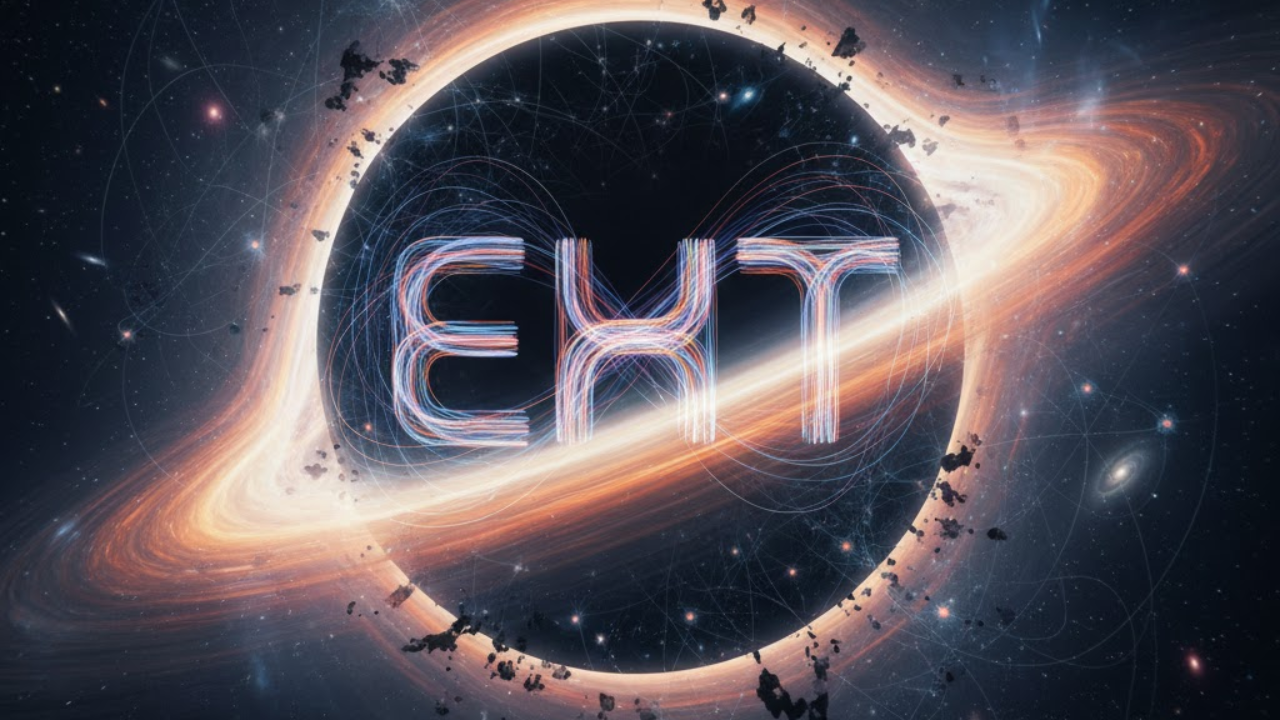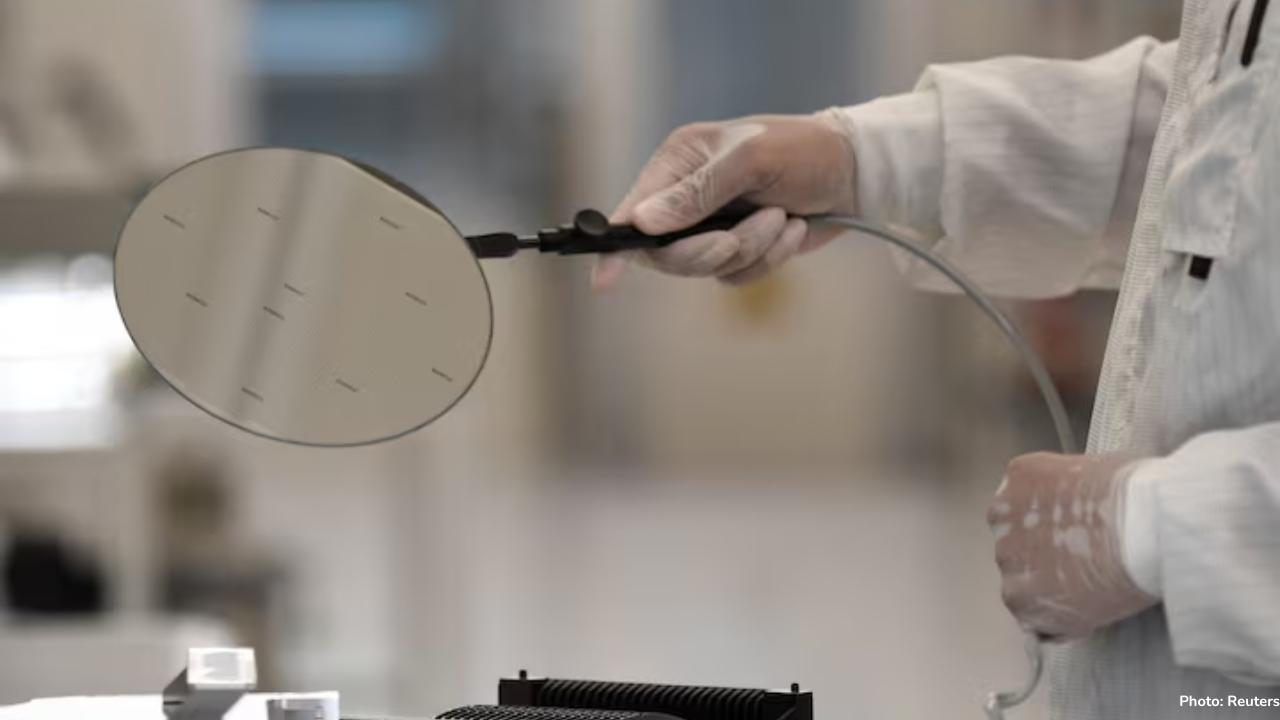
Post by : Naveen Mittal
For decades, dark matter has remained one of the most profound mysteries in astrophysics — invisible, undetectable by conventional means, yet making up nearly 85% of the matter in the universe. Scientists have long theorized its existence based on gravitational effects, but direct observation has remained elusive.
Now, a groundbreaking study suggests a new and unexpected method for investigating dark matter: using images of black hole shadows captured by the Event Horizon Telescope (EHT).
This research proposes that subtle distortions and light patterns around black holes — visible in EHT data — may reveal how dark matter interacts with light and gravity. If confirmed, this approach could revolutionize our understanding of the cosmos, opening an entirely new observational window into one of the universe’s greatest enigmas.
Dark matter does not emit, absorb, or reflect light. Its presence is inferred from its gravitational pull on visible matter, radiation, and large-scale cosmic structures. Galaxies spin faster than their visible mass allows, galaxy clusters exert more gravitational lensing than visible matter accounts for, and cosmic expansion patterns point to a hidden mass component.
Despite its enormous influence, dark matter has never been directly detected through electromagnetic signals or particle interactions.
Traditional methods — such as underground detectors searching for weakly interacting massive particles (WIMPs), particle accelerators like the Large Hadron Collider, and cosmic-ray observatories — have all produced null results so far.
That’s why astronomers are turning to cosmic-scale experiments, using phenomena like black holes and gravitational waves to explore where traditional physics cannot.
The Event Horizon Telescope (EHT) is a global network of radio observatories working together to create images of black holes with unprecedented precision. By synchronizing telescopes across continents using a technique called very long baseline interferometry (VLBI), the EHT achieves the resolving power equivalent to a telescope the size of Earth.
In 2019, EHT produced the world’s first direct image of a black hole — the supermassive black hole M87* in the galaxy Messier 87. In 2022, it revealed another: Sagittarius A*, the black hole at the center of our Milky Way.
These images showed bright rings of light — radiation from superheated gas swirling around the event horizon — and a dark central region known as the shadow, where light cannot escape.
Now, researchers believe these shadows could hold subtle imprints of dark matter, detectable through precise measurements of brightness, polarization, and gravitational lensing patterns.
Black holes reside at the centers of most galaxies, often surrounded by dense regions where dark matter is predicted to cluster. When light from nearby gas interacts with both the black hole’s gravitational field and surrounding dark matter, it can be distorted, delayed, or absorbed in ways that differ from predictions based solely on Einstein’s general relativity.
Researchers propose that by analyzing these distortions — using advanced EHT data — we can infer properties of dark matter, such as:
Its density profile near black holes
The strength of its interaction with light (photons)
Possible annihilation or decay signals that produce additional radiation
Even a small deviation from expected brightness or symmetry in the black hole’s shadow could hint at new physics beyond the Standard Model.
The gravitational field of a black hole bends light in extreme ways. If dark matter is present in significant amounts around it, it could enhance or modify these lensing effects.
Dark matter might create extra deflection or absorption, altering the apparent size or brightness of the photon ring — the thin circle of light outlining the shadow.
This makes black holes not just cosmic monsters, but natural laboratories for testing fundamental physics. By comparing EHT observations with simulations that include dark matter, scientists can test whether dark matter models match reality.
The new research introduces modified spacetime metrics that include the gravitational potential of dark matter halos. These models predict distinct changes in the geometry of photon paths near the event horizon.
Specifically, dark matter could influence:
The radius of the shadow, slightly enlarging or contracting it depending on density.
The intensity of the photon ring, by adding or subtracting energy through scattering.
The polarization patterns of light, altering how it twists around the black hole.
If such changes are observed consistently across multiple black holes — like M87* and Sagittarius A* — they could confirm the gravitational footprint of dark matter.
These models also propose that dark matter annihilation near black holes might produce high-energy photons or neutrinos, which future multi-messenger observatories could detect in coordination with EHT data.
The future of astrophysics lies in multi-messenger astronomy — combining data from light, gravitational waves, neutrinos, and cosmic rays to study cosmic phenomena.
The EHT’s black hole images can be paired with data from:
Gamma-ray observatories (like Fermi or CTA), searching for dark matter annihilation radiation
Gravitational wave detectors (LIGO, Virgo, KAGRA), to detect signals from merging black holes surrounded by dark matter
Neutrino observatories (IceCube), for detecting high-energy particles linked to dark matter decay
Together, these tools form a global detection network, where black hole images provide spatial context for other cosmic messengers.
Despite the promise, the road ahead is complex.
Resolution Limits:
Even with EHT’s Earth-sized baseline, image clarity depends on atmospheric conditions, data processing, and signal noise. Detecting subtle dark matter effects requires precision at the limits of current technology.
Model Dependence:
Different dark matter theories predict different effects. Some involve weak interactions, others self-annihilation or exotic particles. Distinguishing between these in the data is difficult.
Accretion Flow Complexity:
Gas around black holes emits turbulent radiation. Separating these signals from potential dark matter effects requires advanced modeling.
Temporal Variability:
Black holes are dynamic — brightness and shape fluctuate over time. Consistent patterns must be verified across multiple observations to attribute changes to dark matter, not local turbulence.
Calibration and Simulation:
Extremely accurate simulations are needed to compare theoretical models with observed data, requiring supercomputers and interdisciplinary collaboration.
Even with these challenges, the scientific potential is enormous.
If confirmed, this method could transform cosmology and particle physics alike.
It would provide direct evidence that dark matter influences electromagnetic phenomena, bridging the gap between gravitational and quantum realms. This could also validate or rule out leading dark matter candidates, such as WIMPs, axions, or sterile neutrinos.
Beyond dark matter, this research deepens our understanding of how gravity and quantum mechanics coexist at extreme scales — a crucial step toward a unified theory of physics.
The EHT is not stopping with M87* and Sagittarius A*. Future upgrades — known as EHT-Next Generation (ngEHT) — will include more telescopes, higher frequencies, and real-time data processing.
This will allow scientists to:
Produce high-resolution movies of black holes evolving in real time
Detect smaller features near event horizons
Measure light polarization with greater precision
Explore black holes in other galaxies
These improvements will dramatically enhance our ability to detect subtle dark matter effects in and around black holes.
As ngEHT merges with other global observatories, we may soon have the tools to directly probe the invisible fabric of the universe.
The concept of detecting dark matter through black hole images unites multiple fields — astrophysics, particle physics, and general relativity — into one grand experiment.
It redefines how we study unseen forces in the universe:
Not through particle detectors or colliders, but through cosmic imaging.
Not through speculation, but through data from the universe’s most extreme environments.
The black hole’s shadow, once thought to be the ultimate void, may instead be a cosmic mirror reflecting the secrets of dark matter.
Improving Data Analysis Techniques:
Enhanced algorithms are being developed to separate accretion noise from dark matter signals.
Expanding the EHT Network:
Adding more telescopes in Africa, South America, and Antarctica will improve resolution and global coverage.
Simulating Dark Matter Halos Around Black Holes:
Supercomputers are modeling thousands of scenarios to predict what dark matter’s influence should look like in EHT data.
Coordinating with Multi-Wavelength Observations:
Observatories studying X-rays, gamma rays, and neutrinos will cross-reference EHT findings for validation.
Testing Different Black Holes:
Comparing results from multiple black holes will test whether observed distortions are universal or environment-specific.
Each step brings us closer to understanding not just black holes — but the unseen mass that governs the universe.
A new study suggests EHT black hole images could help detect dark matter interactions.
Subtle distortions in black hole shadows may reveal how dark matter bends light and gravity.
The method bridges astrophysics, quantum mechanics, and relativity.
Future upgrades to the EHT network will increase resolution and precision.
If successful, this could mark the first indirect visual evidence of dark matter.
This article is for informational purposes only. The described study and hypotheses are based on ongoing research in astrophysics. Results are subject to future verification as new observational data and peer-reviewed analyses emerge. Readers should consult scientific publications for detailed technical information.
dark matter detection, event horizon telescope, black hole research, astrophysics, gravitational lensing, cosmic observation, dark energy, astronomy breakthroughs, black hole shadow, space discoveries










Lazio Denies Qatari Sale Rumors, Files Legal Complaints
Lazio refutes online claims of Qatari takeover talks, files reports with Italian regulators and judi

Penn State Fires Coach Franklin After Third Straight Loss
Penn State parts ways with James Franklin after 3 conference defeats, naming Terry Smith as interim

Denmark Beats Greece 3-1 to Stay Top in Qualifiers
Denmark wins 3-1 at home over Greece, keeps unbeaten record, and stays ahead of Scotland in Group C

Panthers Edge Cowboys 30-27 with Dowdle’s Big Game
Rico Dowdle dominates former team with 239 total yards as Panthers win 30-27 over Cowboys by last-se

Mariners Beat Blue Jays 3-1 to Win ALCS Game 1
Seattle shuts down Toronto’s bats and wins Game 1 of the ALCS 3-1, with strong pitching and timely h

Dutch Government Seizes Control of China-Owned Chipmaker Nexperia
The Netherlands government steps in over governance risks at Nexperia, suspends its Chinese parent’s